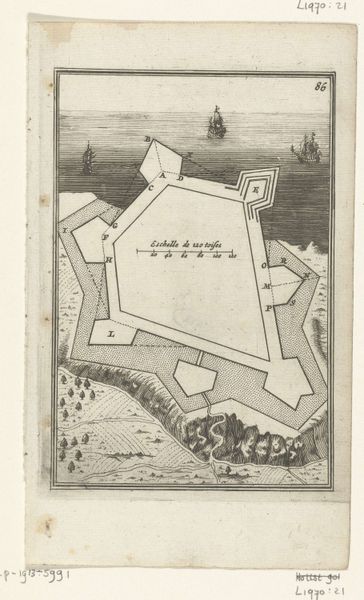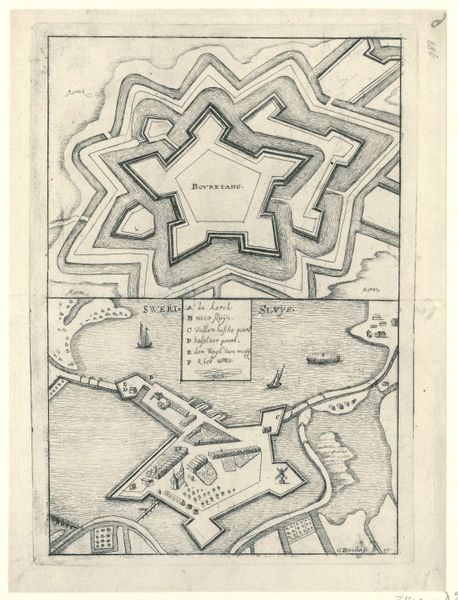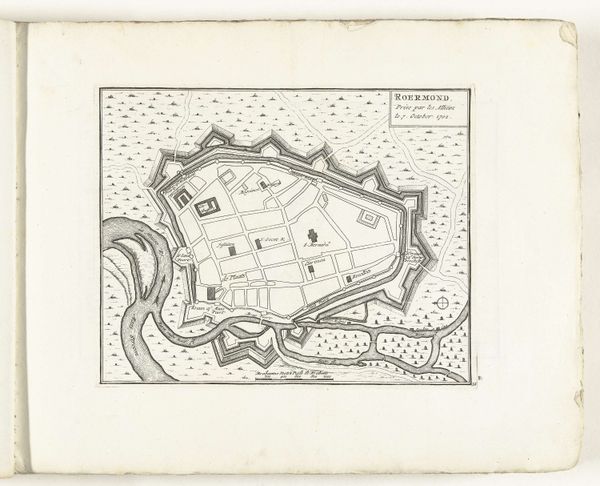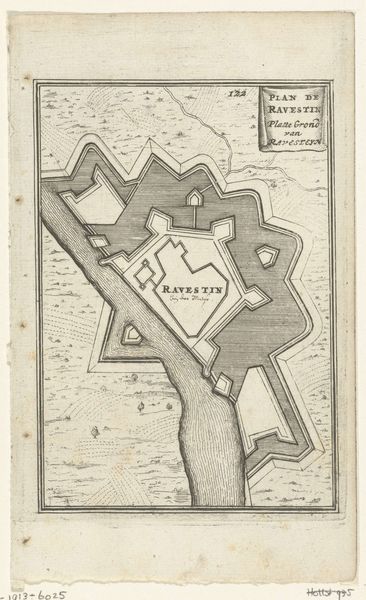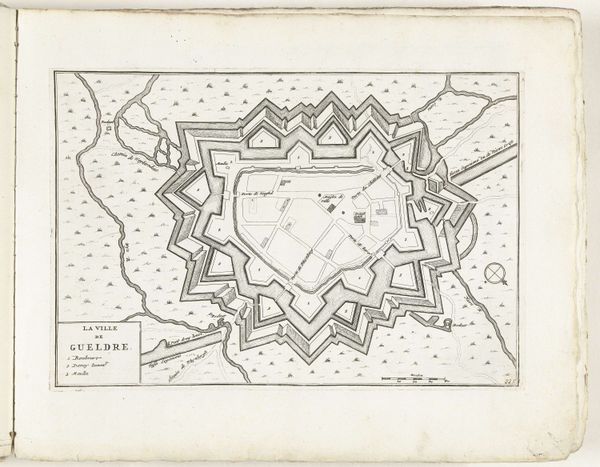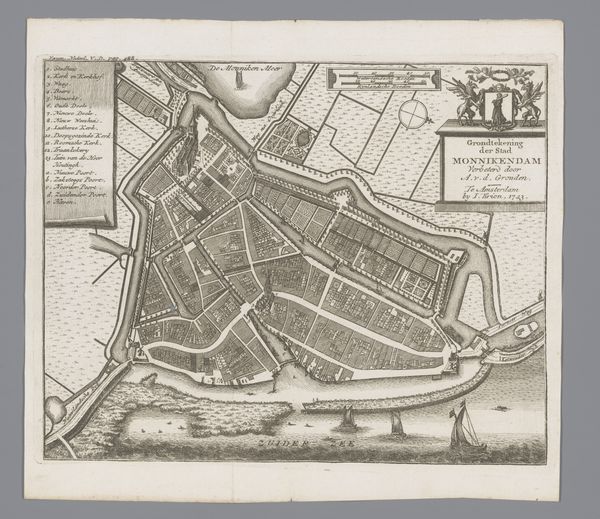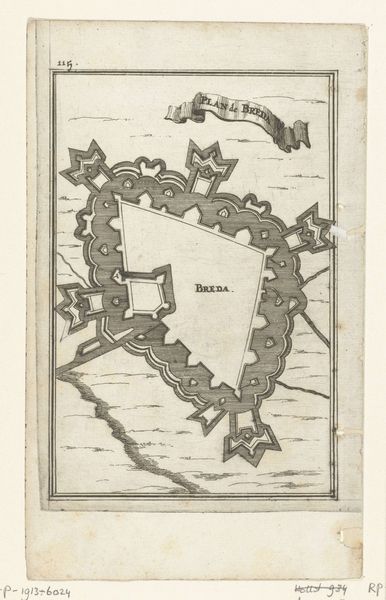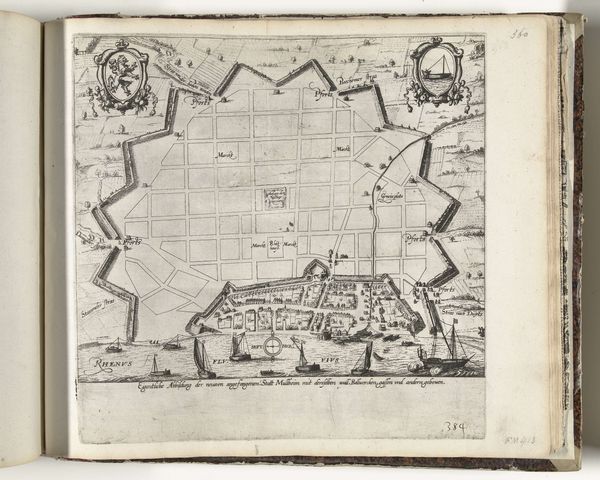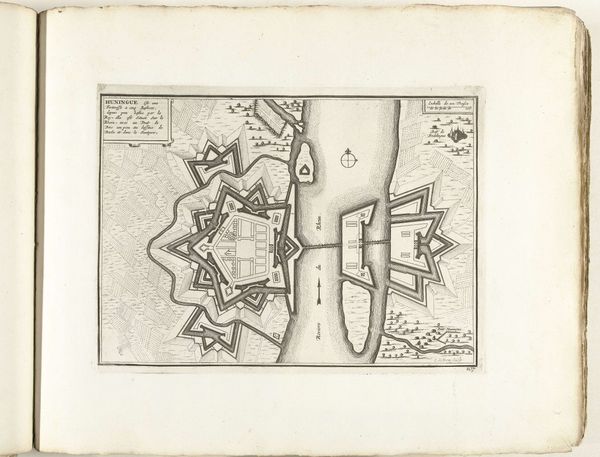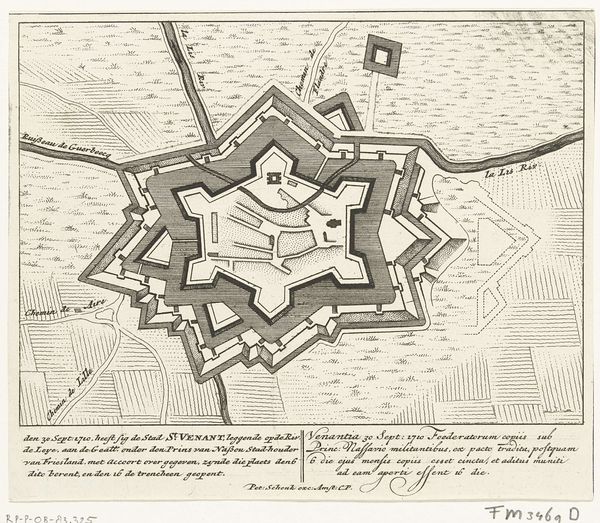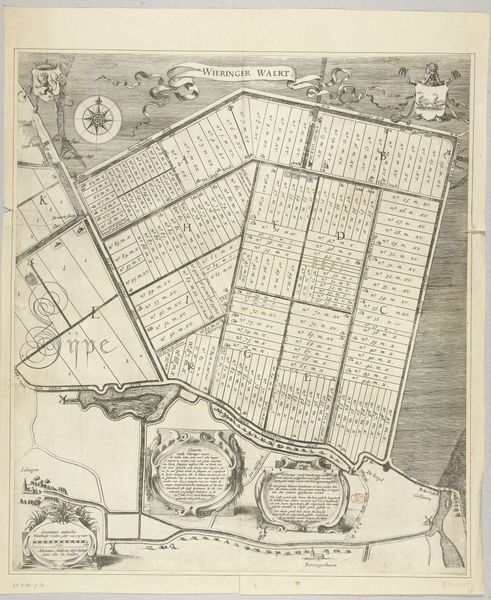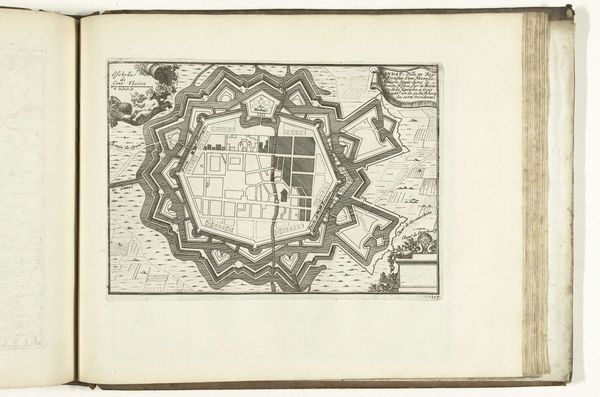
Illustratie voor 'Den Arbeid van Mars' van Allain Manesson Mallet 1672
0:00
0:00
romeyndehooghe
Rijksmuseum
print, engraving, architecture
#
aged paper
#
toned paper
#
medieval
#
baroque
# print
#
old engraving style
#
cityscape
#
history-painting
#
engraving
#
architecture
Dimensions: height 185 mm, width 108 mm
Copyright: Rijks Museum: Open Domain
Curator: Here we have a fascinating print, an engraving titled "Illustratie voor 'Den Arbeid van Mars' van Allain Manesson Mallet," created around 1672 by Romeyn de Hooghe. It's currently held in the Rijksmuseum. Editor: It strikes me immediately as a space obsessed with control, this rigidly planned fortress rising out of nature. The grid-like precision clashes so intensely with the free-flowing lines of the coast. It’s almost unnerving. Curator: Yes, and the visual tension speaks volumes. We see this walled city, or perhaps a fort, presented with such stark geometrical clarity. It reflects the era's preoccupation with order and control—very much a Baroque sensibility seeking to impose structure onto the world, much like we've seen in other urban planning designs across the era. Note also the stylized rendering of the topography surrounding it; this reinforces its strategic, isolated position. Editor: Strategic and isolating... This feels so connected to the broader power dynamics of the time, the rise of militarization, and the insatiable hunger for territorial expansion. It is a visualization of authority expressed by the built environment, an exercise in both control and intimidation. The almost clinical precision here, while technically impressive, can't obscure its role in these oppressive systems. It's as though it wants to control not just land, but also our perspective. Curator: I see your point entirely. It brings to mind the historical resonance such representations carry. The sharp lines and almost diagrammatic presentation aren't simply about aesthetic preferences, but speak directly to a perceived need to dominate and organize, a very male desire for absolute rationalization and control that mirrors the expansionist ambitions that mark this period. Editor: Precisely. When we consider that it's an illustration intended for a text on military engineering, this print transforms into more than a visual record. It's a manifestation of those power structures, it is part and parcel of that war machine that needs land and order. It visualizes strategies and is part of the violence of war itself. Curator: And perhaps, subconsciously, we register that imbalance even now, as modern viewers distanced by time, we can better interpret that intended visual message within the context of the present. Editor: It's a vital point. Analyzing historical artwork through a critical lens reminds us of our responsibilities toward understanding our own biases when evaluating our history. Curator: Absolutely. In a way, artworks like this echo far beyond their initial contexts; they teach us continuously how to challenge not only how the world once was but also the status quo today.
Comments
No comments
Be the first to comment and join the conversation on the ultimate creative platform.
